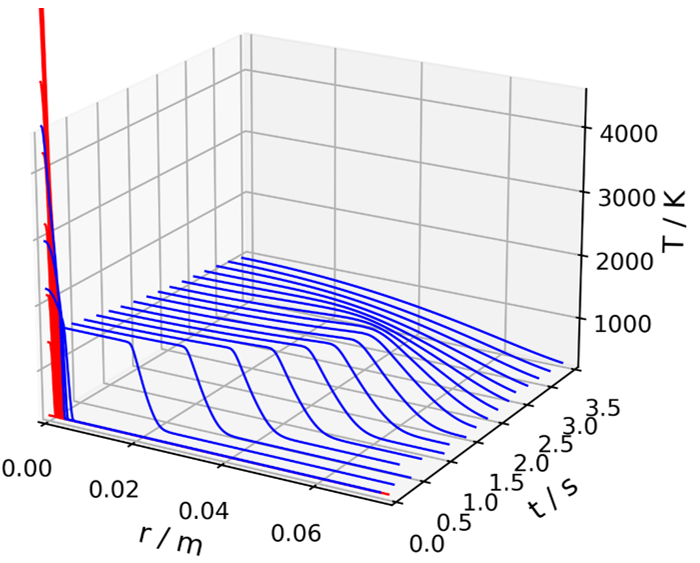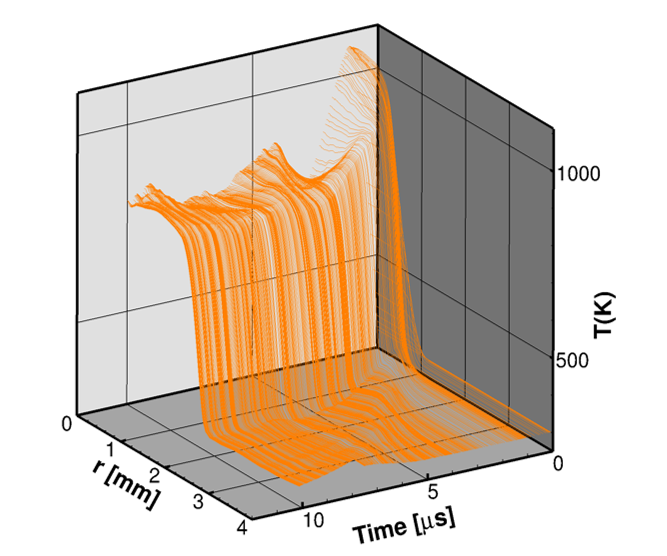Experimental and numerical investigations of laminar and turbulent spark ignition of ammonia/hydrogen/air mixtures at high pressures and temperatures
- contact:
- funding:
Deutsche Forschungsgemeinschaft
- Partner:
Ulrich Maas (KIT), Steven Shy (National
Central University, Taiwan)
The aim of this project is the numerical modeling of laminar and turbulent spark ignition of ammonia/hydrogen/air mixtures at high pressures and temperatures. A hierarchical model will be developed that integrates detailed numerical simulations, reduction of complex chemistry-transport interactions (via REDIM), and statistical models for turbulence-chemistry coupling. The numerical results will be validated with experimental data from the Taiwanese partner. The project contributes to the improved prediction and optimization of ignition processes for carbon-free energy carriers.
Motivation
- Ammonia has a high volumetric energy density compared to hydrogen
- Carbon-free
- Existing infrastructure
- The addition of hydrogen significantly improves ignition and combustion properties
Challenges
- The low reactivity of ammonia makes ignition of these fuels prone to perturbations, such as radiation effects
- Pressure waves must be considered for short ignition times
Methodology
- One-dimensional geometries, detailed chemistry, and detailed molecular transport for laminar cases
- Three-dimensional CFD code including detailed chemistry and molecular transport for turbulent cases


